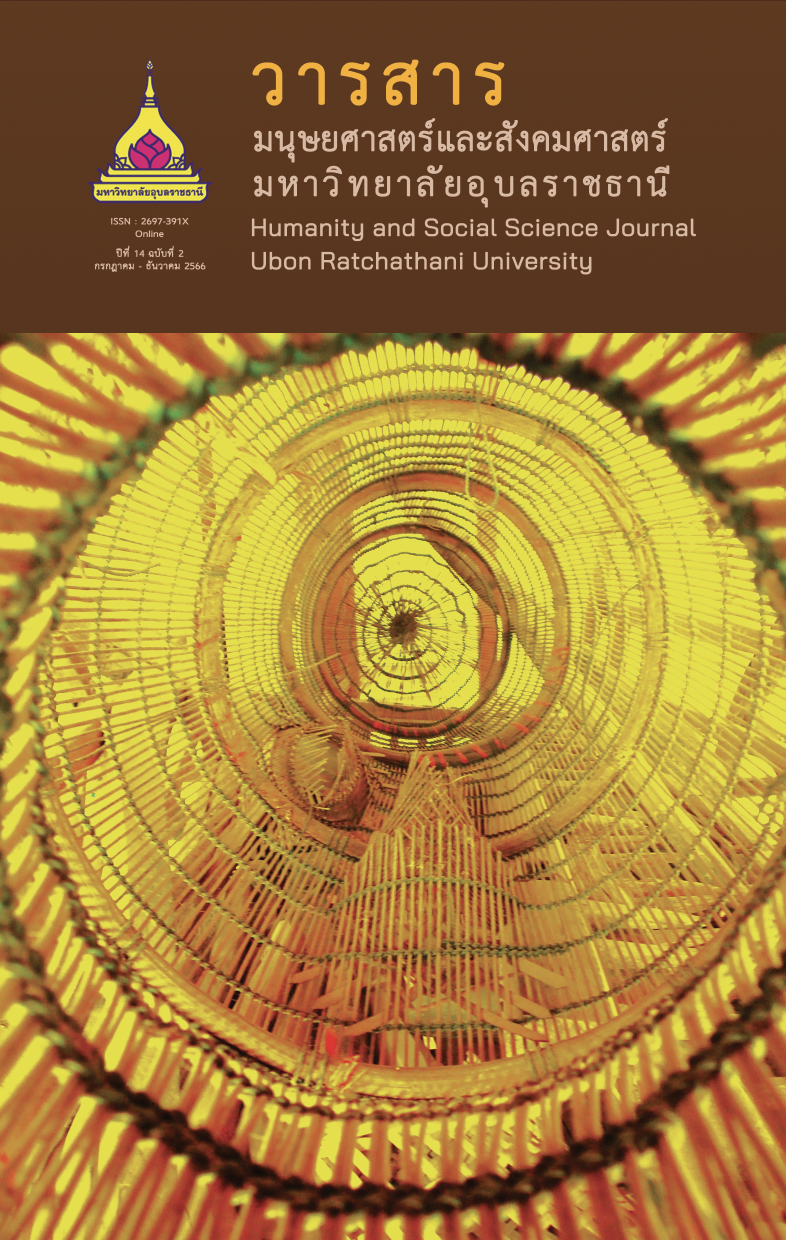รูปแบบการเรียนรู้ส่วนบุคคลในศตวรรษที่ 21 หลังการระบาดของ COVID-19
Main Article Content
บทคัดย่อ
การเรียนรู้ส่วนบุคคลเป็นการเรียนรู้ที่ตอบสนองธรรมชาติ ความต้องการ และความแตกต่างระหว่างบุคคลได้อย่างมีประสิทธิภาพ เป็นรูปแบบการเรียนรู้ที่มีพลังและเหมาะสมสำหรับการพัฒนาศักยภาพของมนุษย์อย่างมาก โดยเฉพาะ ในศตวรรษที่ 21 ที่มีการประยุกต์ใช้เทคโนโลยีการเรียนรู้ และปัญญาประดิษฐ์ อย่างกว้างขวาง และโลกกำลังก้าวเข้าสู่ยุคโลกาภิวัตน์อย่างสมบูรณ์ทำให้มนุษย์สามารถติดต่อสื่อสาร ทำงาน และแลกเปลี่ยนเรียนรู้กันได้ทั่วโลก มีทรัพยากรการเรียนรู้ที่หลากหลาย ครอบคลุมทุกศาสตร์สาขาบนอินเทอร์เน็ต สามารถทำลายข้อจำกัดการเรียนรู้ส่วนบุคคลในอดีตที่ไม่สามารถบริหารจัดการได้อย่างมีประสิทธิภาพ อีกทั้งเกิดสถานการณ์การแพร่ระบาดของ COVID-19 ของโลกทำให้มนุษย์ไม่สามารถทำงานหรือเรียนรู้ร่วมกันเป็นกลุ่มใหญ่ได้ จึงเป็นปัจจัยบังคับให้เกิดการปรับเปลี่ยนพฤติกรรมการใช้ชีวิตและการเรียนรู้ใหม่ที่มีคุณภาพไม่ด้อยกว่าเดิม จึงคาดว่าการเรียนรู้ส่วนบุคคลจะเป็นรูปแบบการเรียนรู้ที่เหมาะสมและประยุกต์ใช้อย่างแพร่หลายในศตวรรษที่ 21 หลังการแพร่ระบาดของ COVID-19 บทความวิชาการนี้ทำการทบทวนวรรณกรรมอย่างเป็นระบบจากเอกสารทางวิชาการ รายงานวิจัย บทความวิชาการ และบทความวิจัยที่เกี่ยวข้องทั้งในและต่างประเทศ นำเสนอแนวคิดครอบคลุม 6 ประเด็น ดังนี้ 1) ความหมายการเรียนรู้ส่วนบุคคล 2) วิวัฒนาการเรียนรู้ส่วนบุคคล 3) ปรากฏการณ์ที่มีอิทธิพลต่อการเปลี่ยนแปลงทักษะการดำเนินชีวิตในศตวรรษที่ 21 4) ทิศทางการจัดการเรียนรู้ส่วนบุคคลในศตวรรษที่ 21 5) แนวโน้มการจัดการเรียนรู้ส่วนบุคคลหลังการระบาดของ COVID-19 และ 6) รูปแบบการเรียนรู้ส่วนบุคคล หลังการระบาดของ COVID-19
Article Details

อนุญาตภายใต้เงื่อนไข Creative Commons Attribution-NonCommercial-NoDerivatives 4.0 International License.
บทความที่ได้รับการตีพิมพ์เป็นลิขสิทธิ์ของวารสารมนุษยศาสตร์และสังคมศาสตร์ มหาวิทยาลัยอุบลราชธานี
ข้อความที่ปรากฏในบทความแต่ละเรื่องในวารสารวิชาการเล่มนี้เป็นความคิดเห็นส่วนตัวของผู้เขียนแต่ละท่านไม่เกี่ยวข้องกับมหาวิทยาลัยอุบลราชธานี และคณาจารย์ท่านอื่นๆในมหาวิทยาลัยฯ แต่อย่างใด ความรับผิดชอบองค์ประกอบทั้งหมดของบทความแต่ละเรื่องเป็นของผู้เขียนแต่ละท่าน หากมีความผิดพลาดใดๆ ผู้เขียนแต่ละท่านจะรับผิดชอบบทความของตนเองแต่ผู้เดียว
เอกสารอ้างอิง
Allahar, H. (2014). Major global megatrends: implications for advanced and emerging countries. Researchjournali's – Journal of Management, 2(8), 1-18.
Baker, R. (2016). Using learning analytics in personalized learning. http://www.centeril.org
Benjamin, L. (1988). History of teaching machines. American psychologist, 43(9), 703–712.
Bill & Melinda Gates Foundation. (2010). Next generation learning: the intelligent use of technology to develop innovative learning models and personalized. https://docs.gatesfoundation.org/ documents/nextgenlearning.pdf.
Brass, J. (2020). Personalized learning: a history of the present. Journal of curriculum theorizing, 35(2).
Bulger, M. (2016). Personalized learning: The conversations we’re not having. Working paper 07.22.2016. New York, NY: Data & Society Research Institute.
Chareonwongsak, K. (2006). Creative Thinking (7th ed.). Bangkok: Success Media.
Cook, D.J., Mulrow, C. D. & Haynes, R. B. (1997). Systematic reviews: synthesis of best evidence for clinical decisions. Annals of internal medicine, 126(5), 376-380.
Crowder, N. (1959). Automatic tutoring by means of intrinsic programming. Automatic teaching. The state of the art, New York: John Wiley and Sons.
Crowder, N. (1963). On the differences between linear and intrinsic programing. The Phi Delta Kappan, 44(6), 250–254.
Delors, J. (1998). Education for the twenty-first century: issues and prospects. the United nations educational, scientific and cultural organization. France: Universitaires de France.
Duncan, A. (2010). Transforming American education: learning powered by technology. National education technology plan 2010. Washington, DC: U.S. Department of Education office of Educational Technology. from https://www.ed.gov/sites/ default/files/netp2010.pdf.
HELLO Thailand, (2021). Delve into 10 future educational trends that parents must know!. https://th.hellomagazine.com/education/ 10-future-trends-of-education/.
HoLon IQ. (2021). Education in 2030: five scenarios for the future of learning and talent. https://www.holoniq.com/wp-content/ uploads/2018/06/HolonIQ-Education-in-2030.pdf.
Skinner, B. F. (1968). The technology of teaching. New York, NY: Meredith Corporation.
Skinner, B. F. (1986). Programmed instruction revisited. Phi Delta Kappan, 68(2), 103–110.
New Classrooms. (2015). Teach to one: math: major concept map. http://www.newclassrooms.org/wp- content/uploads/2016/07/ New_Classrooms_Teach_to_One_Math_ Concept_Map.pdf.
New Classrooms. (2020). Teach to one math: a new classrooms solution. https://www.newclassrooms.org/.
Pelletier, K., Brown, M., Brooks, D. C., Mark McCormack, M., Reeves, J., Arbino, N., Bozkurt, A., Crawford, S., Czerniewicz, L., Gibson, R., Linder, K., Mason, J. & Mondelli, V. (2021). 2021 educause horizon report, teaching and learning edition. https://www.learntechlib. org/d/219489/.
Pressey, S. L. (1933). Psychology and the new education. New York, NY: Harper.
Richmond, K. (1963). Teachers and machines: an introduction to the theory and practice of programmed learning. London, UK: Collins.
Thompson, G. (2016). Computer adaptive testing, big data and algorithmic approaches to education. British Journal of Sociology of Education, 38(6), 827–840.
Thompson, G., & Cook, I. (2016). The logic of data-sense: Thinking through learning personalisation. Discourse: Studies in the Cultural Politics of Education, 38(5), 740–754.
U.S. Department of Education. (2012). Enhancing teaching and learning through educational data mining and learning analytics: An issue brief. Washington, D.C.: U.S. Department of Education Office of Educational Technology
Williamson, B. (2015). Governing software: Networks, databases and algorithmic power in the digital governance of public education. Learning, Media and Technology, 40(1), 83–105.
Williamson, B. (2017). Educating Silicon Valley: Corporate education reform and the reproduction of the techno-economic revolution. Review of Education, Pedagogy, and Cultural Studies, 39(3), 265–288.


